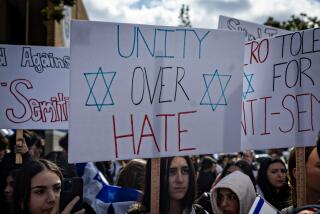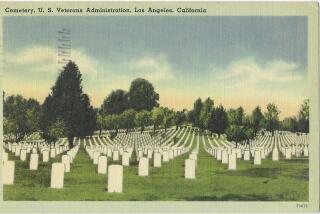A fatal site, threefold
- Share via
The flowers and candles began piling up Friday at the corner of 104th Street and Budlong Avenue, after a suspected gang member was fatally shot there.
To residents in this rough section of unincorporated South L.A., that killing was bad enough. Then Monday night, a group of mourners were gathered there when a gunman walked by and opened fire, killing two men -- both suspected gang members -- and gravely wounding a third.
By Tuesday afternoon, the corner had the grim distinction of hosting a double shrine.
“It’s sad, you can’t even pay your respects anymore,” said former resident Larry Warren, 47. “It’s almost like you going to the graveyard to pay your respects and somebody goes there to shoot you.”
Violence at shrines and memorials for suspected or known gang members is far from widespread, but it’s enough of a problem that a growing number of cities including Oakland, Berkeley, Boston and Hartford, Conn., are trying to regulate them.
“We have to realize there is a new reality here,” said Los Angeles County Sheriff Lee Baca, whose department is investigating the shootings. “We’ve got to understand such street memorials are no longer safe places to go. They are being targeted by gang members. If the victim is a gang member, it isn’t safe to be around that memorial.”
Despite the concerns, there does not appear to be support for restricting the shrines in Los Angeles County. Some officials who represent South L.A. argue that the street-side memorials are an important tool for healing, not just for gang members but family and friends.
“The larger question is what do shrines mean?” said L.A. County Supervisor Mark Ridley-Thomas. “If they signal respect for the dead, then that’s one of the defining features of civility. This is how people pay their respects for the dead.”
Councilwoman Janice Hahn agreed, saying the violence at the Budlong Avenue shrine underscored the need for the city to focus more on gang enforcement and helping young people get out of the gang life.
“Putting extra protection around memorial shrines is a stopgap measure,” Hahn said. “I have always been very hesitant to regulate these memorials because they are part of the culture of these communities and the healing that they have to go through. I’m not going to tell people how to grieve, mourn or remember someone.”
The violence on Budlong Avenue began Friday with a shooting that left Gregory Thomas, 37, dead. Then on Monday night as friends and family gathered at the site, an assailant opened fire, killing Keith Orange, 45, and Joe Carl Caver, 26. Baca described the two victims as known gang members. Investigators believe both incidents involved gang rivalries.
In the Westmont area Tuesday, residents said the back-to-back shootings left them feeling unsafe -- but also sad for those who were killed, regardless of their suspected gang affiliation. “As I told my mother-in-law, these were human beings, let’s at least drop flowers off,” said Maria Gutierrez, who was in the neighborhood to visit her family.
Quiesha Johnson, the fiancee of Orange, said that she believed there should be more deputies on hand to oversee the vigils -- but that the memorials serve a purpose. Johnson, however, did not object to restrictions at memorial sites as long as limitations were reasonable.
Families should be given “at least a week or two, or until the person is buried,” Johnson, 26, said. “Allow the family to at least come pick items up from the site before clearing it off; some of those things have meaning to people.”
Two Bay Area cities have grappled with the issue in recent years.
The Oakland Police Department placed limitations on street memorials after a spate of gang-revenge shootings in 2004 ended with a slaying at a street memorial. Oakland policy allows for makeshift shrines to stand for 48 hours before police or city maintenance workers remove them.
“They used to hang around for a week or two,” Oakland Police Department spokesman Jeff Thomason said of the memorials. “But it’s just another opportunity for a rival gang member to take a shot at people.” He said the department encourages mourners to pay their respects “behind closed doors or memorialize them at the services.”
Berkeley city officials went a step further in October after a series of shootings on the south side of the city left two people dead and one person wounded.
In one of the incidents, a woman taking out her trash was hit in the stomach by a stray bullet fired by someone at a nearby memorial.
Like Oakland, Berkeley officials at first allowed memorials for 48 hours. But the rules were amended to give the city manager the choice of getting rid of them right away.
“If it creates a public safety issue, the city manager has the authority to remove them immediately,” said Deputy City Atty. Lisa Caronna, noting that the policy applies only to displays in public areas such as streets and sidewalks.
Wes McBride, executive director of the California Gang Investigators Assn. and a retired Los Angeles County sheriff’s deputy, said gang members usually are attracted to places where gang crimes have occurred to see “what the fuss is about.”
McBride said Oakland and other smaller cities have moved against the shrines in part because of a need to take proactive measures. The Los Angeles Police Department and Sheriff’s Department tend to use their resources to saturate an area. But that can go on only for so long.
“It’s expensive, time-consuming and you have to rob Peter to pay Paul to do it,” McBride said.
--
--
Times staff writer Andrew Blankstein contributed to this report.
More to Read
Sign up for Essential California
The most important California stories and recommendations in your inbox every morning.
You may occasionally receive promotional content from the Los Angeles Times.











